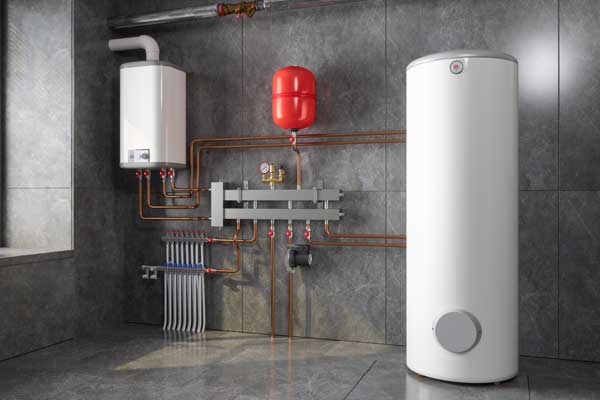In this article in the next paragraphs you can get a good deal of wonderful insight about Water Heater Maintenance Tips You Can't Afford to Forget.

Warm water is necessary for everyday convenience, whether it's for a rejuvenating shower or cleaning meals. To guarantee your hot water system runs successfully and lasts much longer, regular upkeep is key. This article gives practical pointers and understandings on how to preserve your home's hot water system to prevent disruptions and expensive repairs.
Introduction
Maintaining your home's hot water system could seem complicated, but with a few easy actions, you can guarantee it operates smoothly for several years to come. This overview covers every little thing from comprehending your warm water system to DIY maintenance ideas and recognizing when to contact specialist help.
Value of Keeping Your Hot Water System
Routine upkeep not just expands the lifespan of your warm water system yet also ensures it runs successfully. Neglecting maintenance can result in decreased performance, higher energy expenses, and also early failing of the system.
Indicators Your Warm Water System Demands Upkeep
Knowing when your hot water system needs interest can prevent major problems. Watch out for indicators such as inconsistent water temperature, odd sounds from the heating unit, or corroded water.
Recognizing Your Warm Water System
Before diving into maintenance jobs, it's practical to recognize the standard parts of your warm water system. Commonly, this consists of the hot water heater itself, pipelines, anode rods, and temperature controls.
Regular Monthly Maintenance Tasks
Routine monthly checks can help catch minor problems before they escalate.
Flushing the Hot Water Heater
Purging your hot water heater removes sediment buildup, boosting effectiveness and extending its life.
Checking and Replacing Anode Rods
Anode poles protect against deterioration inside the container. Evaluating and changing them when worn is essential.
Examining and Adjusting Temperature Level Setups
Readjusting the temperature level settings ensures optimum efficiency and security.
DIY Tips for Maintenance
You can perform numerous upkeep tasks on your own to keep your hot water system in leading problem.
Checking for Leaks
Frequently inspect pipelines and connections for leaks, as these can lead to water damages and higher bills.
Examining Pressure Alleviation Valves
Checking the pressure relief valve guarantees it functions appropriately and avoids too much pressure build-up.
Protecting Pipes
Shielding hot water pipelines decreases heat loss and can conserve energy.
When to Call an Expert
While DIY maintenance is advantageous, some concerns require expert knowledge.
Facility Issues Needing Professional Assistance
Examples include significant leakages, electric troubles, or if your water heater is consistently underperforming.
Regular Professional Upkeep Advantages
Specialist maintenance can consist of comprehensive examinations, tune-ups, and guaranteeing conformity with security criteria.
Final thought
Normal maintenance of your home's warm water system is vital for efficiency, longevity, and price savings. By complying with these pointers and knowing when to look for specialist help, you can make certain a reputable supply of warm water without unexpected disruptions.
How to Maintain an Instant Hot Water Heater
Before tinkering with your hot water heater, make sure that it’s not powered on. You also have to turn off the main circuit breaker and shut off the main gas line to prevent accidents. Also turn off the water valves connected to your unit to prevent water from flowing into and out of the appliance. 2. When you’re done, you have to detach the purge valves’ caps. These look like the letter “T” and are situated on either side of the water valves. Doing so will release any pressure that has accumulated inside the valves while at the same time avoid hot water from shooting out and burning your skin. 3. When the purge valves’ caps are removed, you have to connect your hosing lines to the valves. Your unit should have come with three hoses but if it didn’t, you can purchase these things from any hardware or home repair shops. You can also get them from retail stores that sell water heating systems. Read the user’s manual and follow it to complete this task properly. When the hosing lines are connected, open the purge port’s valves. 4. You should never use harsh chemical cleaners or solutions when cleaning your unit. Make use of white vinegar instead. It should be undiluted and you’ll probably use about 2 gallons. 5. Now flush your water heater. This task should probably take about 40 minutes. We can’t give you specific directions for this because the procedure is carried out depending on the type, model and brand of your heater. With that being said, refer to the user’s manual. 6. When you’re done draining the unit, you have to turn off the purge port valves again. Remove the hosing lines that you earlier installed on each of the water valves. Put the valve caps (purge port) back in their respective places and be very careful so as not to damage the rubber discs that are found inside these caps. 7. Now that everything’s back in place, check your user’s manual again to find out how to reactivate your water heating system. 8. Once it is working, turn one of your hot water faucets on just to let air pass through the heater’s water supply pipes. Leave the tap on until water flows smoothly out of it. https://www.orrplumbing.com/blog/2014/september/how-to-maintain-an-instant-hot-water-heater/

I have been very focused on How to Maintain Your Water Heater & Prolong its Life and I'm hoping you enjoyed reading the page. Sharing is nice. Helping others is fun. I cherish reading our article about How to Maintain a Hot Water Heater in a Few Simple Steps.
Website